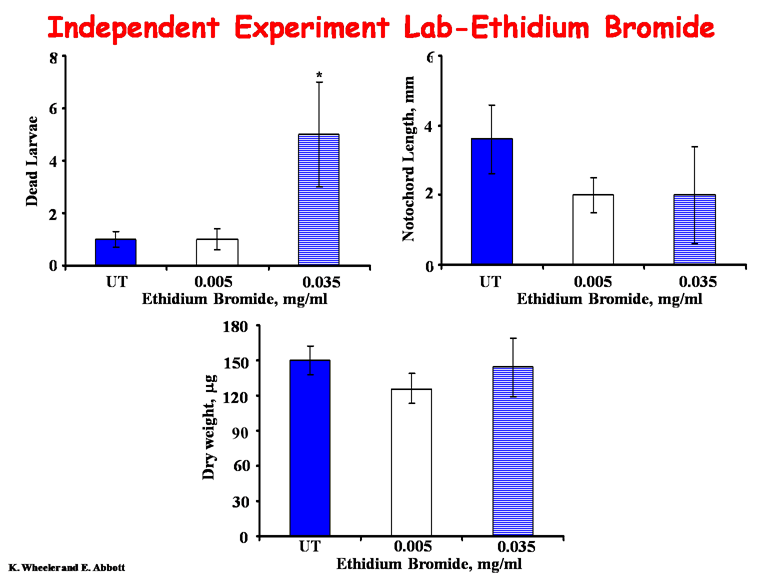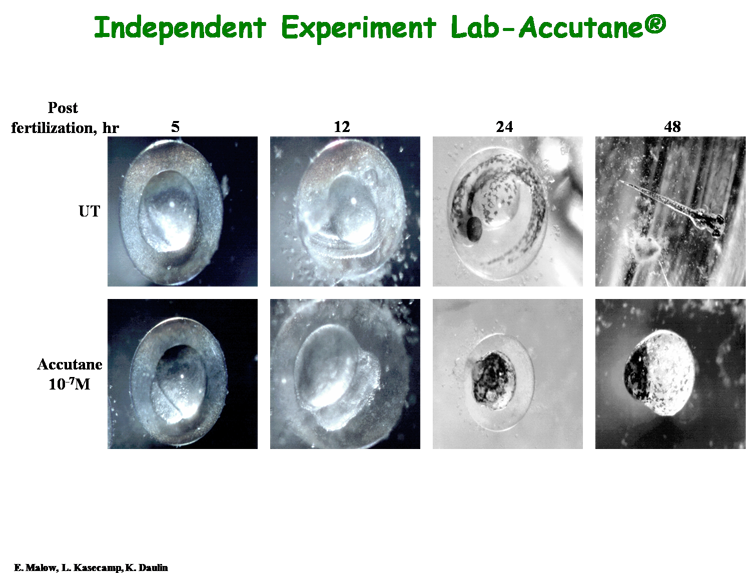| Fall 2009 |
||
| PREVIOUS|PAGE 1 | ||
| Studying Zebrafish Development
|
 |
|
|
This mini workshop discussed a five-week lab in which students used zebrafish (Danio rerio) to examine the effects of various drugs or environmental contaminants on normal development. Zebrafish have become a widely-used model system for the study of vertebrate development and can be incorporated into classes such as ‘Toxicology’ or ‘Developmental Biology.’ This system is particularly amenable for use in the laboratory because of the ease of collection and manipulation, as well as the rapid rate of development. The lab was divided up into two separate sections. In the first section students examined normal development, and compared it to overall development, growth, weight, and behavior of exposed zebrafish. In this section the toxicants and doses were selected from previously published reports; they included retinoic acid, lithium chloride, and ethanol. The students collected data on notochord length and dry weight to determine if changes in growth occur in different treatments. The quantitative data was evaluated for statistically significant differences between treatments. During the workshop I stressed the importance of this section in getting the students acquainted with zebrafish development, maintenance, and measurements. The second part of the lab was multifaceted. Students were asked to write a research proposal for an independent experiment of their choice, carry out the experiment, and present their findings. The outcome for this project exceeded my expectations. By allowing students the freedom to pick their toxicants and to carry out the experiment independently, they showed impressive forethought, excitement, and commitment. The toxicants that they chose to investigate ranged from ethidum bromide to accutane, and the experiments(?) resulted in reproducible, statistically significant differences. Furthermore, student interest and excitement for these projects led to the development of independent study projects for other classes. I was grateful for the feedback I received when presenting this mini workshop. Participants informed me of equipment, supplies, and funding that will enhance the lab. They also suggested different assignments, measurements, and chemicals that could be incorporated. I plan to implement many of these suggestions into future labs
|
||
| PREVIOUS|PAGE 1 | ||




